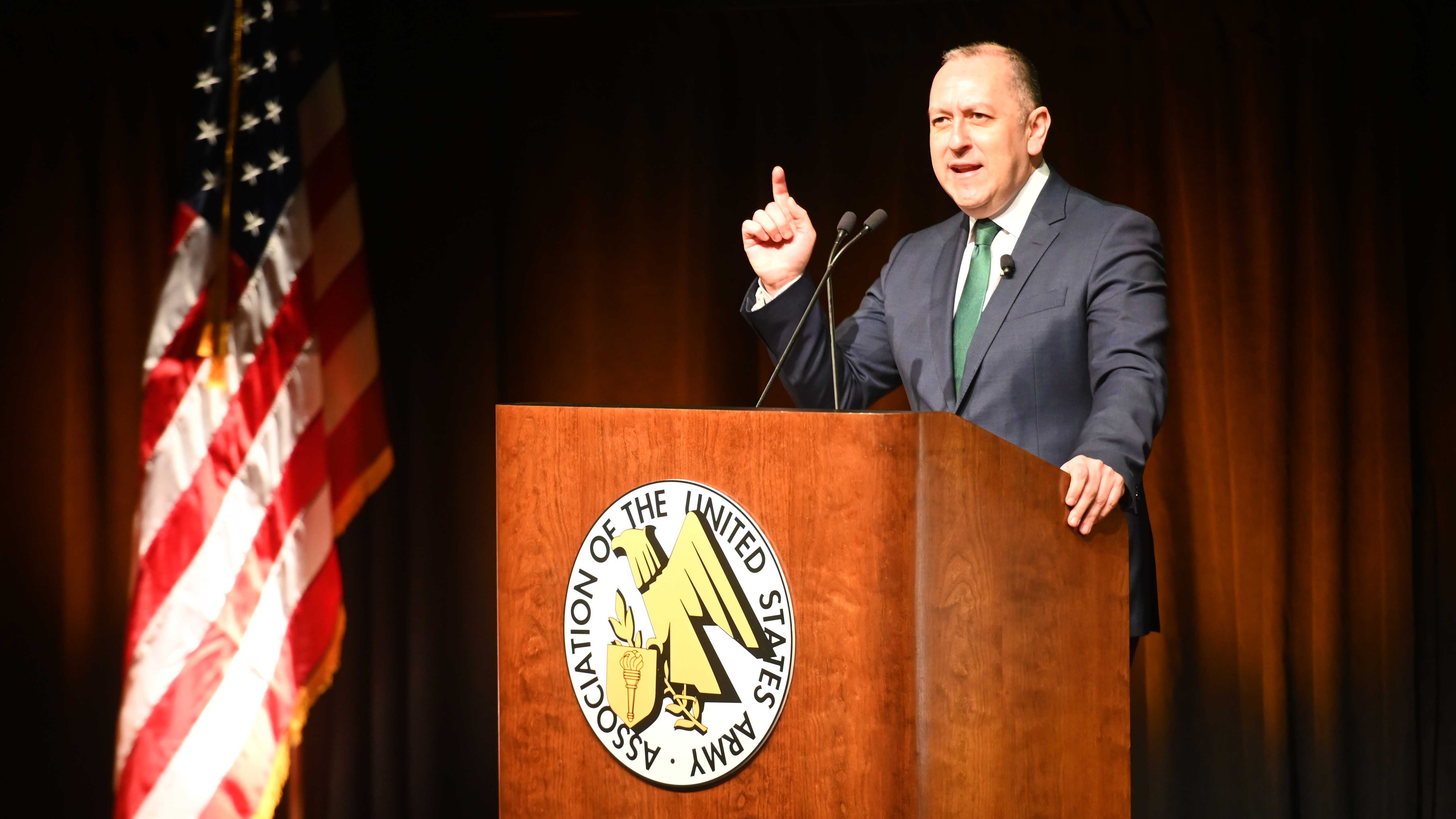Camarillo ‘Very Optimistic’ About Army Transformation
Camarillo ‘Very Optimistic’ About Army Transformation

The Army has “a pretty good chance and a pretty good track record at success,” Army Undersecretary Gabe Camarillo said in a keynote speech on the opening day of the Association of the U.S. Army’s 2023 Global Force Symposium and Exposition in Huntsville, Alabama.
In an upbeat message about the Army’s modernization efforts, Camarillo said that in fundamental ways, “we reorganized to tackle our system requirements and our ability to experiment with technology in a concerted way.”
“We have stuck with the same priorities in modernization since 2018,” he said, which has “provided stability in planning.” He also described the “reform-minded spirit of risk-taking and failing early” as being a big departure from how the Army once proceeded.
The Army’s transformation vision has survived shifts in leadership and received continued budgetary support, avoiding traps that have haunted the service in the past when there were changes in leadership and shifting budget priorities.
“This is different,” Camarillo said. “The Army has maintained the six same priorities, and that has provided continuity.”
“The advantage of maintaining these six priorities is that they’re the right bets to place,” he said, describing them as being consistent with the National Defense Strategy.
One of the bigger challenges facing the Army is having timely and consistent funding, something the service doesn’t control. Timely appropriations allow sustained investment that “offers stability and predictability to the industrial base,” he said.
“As we’ve seen this past year, the risks imposed by cycles of feast and famine can have some long-range impacts on the resiliency of our industrial base capacity on our critical suppliers,” Camarillo said. “When it is not attended to, it can affect not only current readiness but future readiness.”
Camarillo said he is “very optimistic” about the future. “We will have technical challenges, to be sure, but nothing is 100% risk-free and easy to do in this business,” he said.
There are big steps ahead in areas like tactical and operational concealment, shooting farther and faster than the enemy and in adapting systems to different terrain and environments.
“We’re a service that has to operate in the Arctic and in the desert, in urban and open terrain, where it's permissive and highly contested,” Camarillo said. “We need to make sure that our equipment is as effective as it possibly can be in all environments.”

